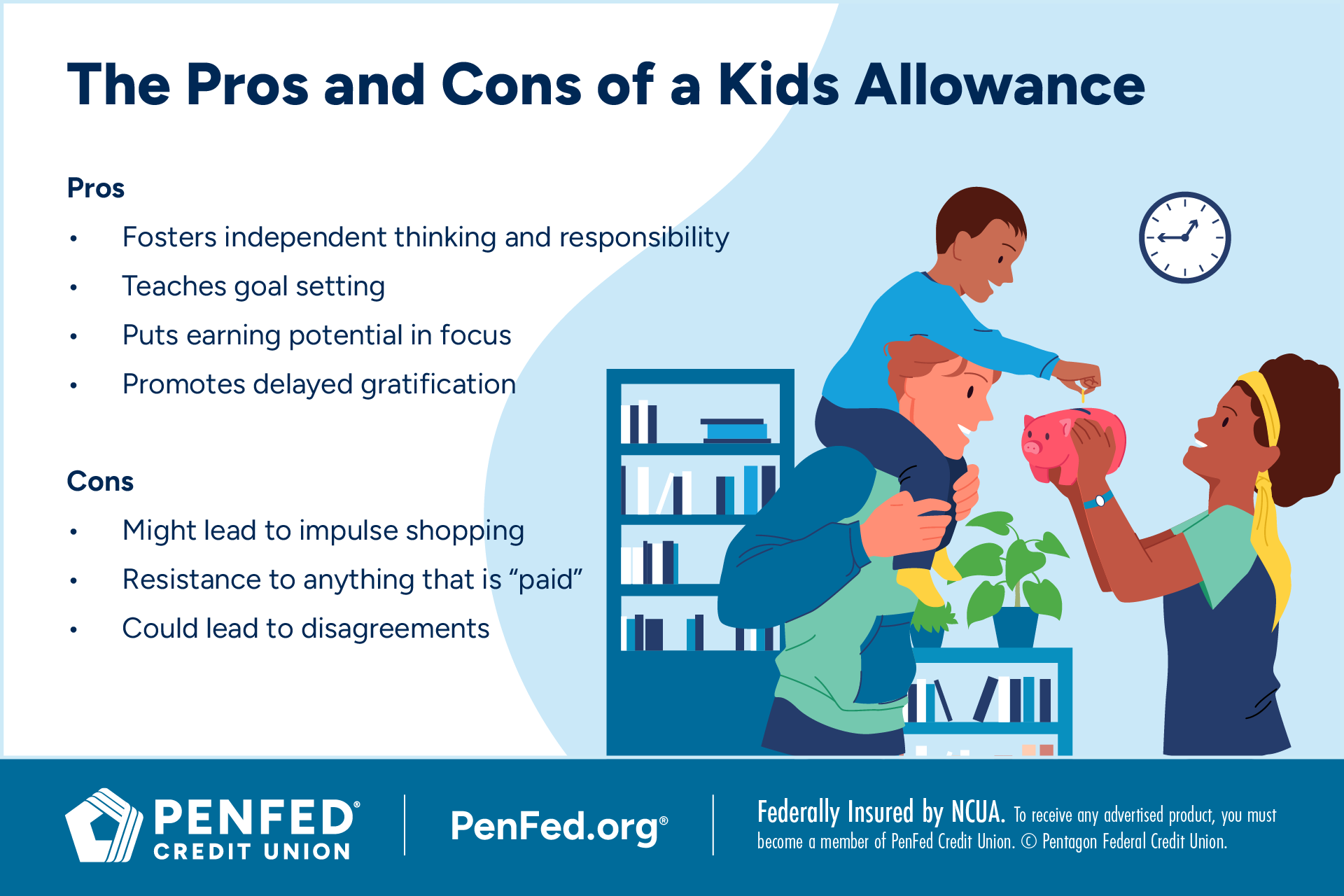YOUTH FINANCE
For Parents and Teens: The Best Kids’ Finance Apps to Teach Money Management
What You’ll Learn: How kids can build smart money habits with finance apps.
Expected Read Time: 12 MINUTES
Your teen wants the latest thing, but their piggy bank is looking a little deflated. Or maybe, they picked up a part-time gig, but their pay seems to vanish as quickly as it appears, forcing you to have the awkward “money doesn’t grow on trees” talk.
Let’s face it. Personal finance can be confusing, whether you’re trying to teach it or learn it. But what if there was a way to make money lessons less daunting and more accessible — even enjoyable?
Cue kids’ finance apps!
Kids’ finance apps are getting more popular, and they’re actually a great way to make that looming obsession with tech more practical. Instead of getting hooked on another game, they’ll understand the difference between needs and wants, learn to track spending, and set goals that feel achievable.
Check out our roundup of top kids’ finance apps and usher your kids into a world where dollars and cents make sense, agency takes hold, and money mistakes are learning curves and not catastrophes.
How Finance Apps Can Teach Money Management Skills
To young minds, money is an abstract concept. After all, your children often see you tap a card or click a button — and just like that, the desired item appears.
Finance apps turn the abstract into the tangible. They provide a safe and engaging space for kids and teens to learn by doing, without the sting of real-world money mishaps.
Let’s say your teen is experimenting with a budgeting feature in an app. If they put aside too much of their allowance for entertainment and not enough for transportation, the app will visually highlight this imbalance so they don’t find themselves at the bus stop, short on fare.
Key Finance App Features
The search has begun! Here are some essential elements to look for when comparing finance apps for kids.
- Budgeting tools: Budgeting is a core concept of personal finance. Apps make budgeting easy by allowing your young user to allocate funds to different spending categories such as entertainment, snacks, and savings.
- Real-time tracking capabilities: Several kids’ finance apps provide an instant snapshot of balances and transactions, just like their adult counterparts. Make sure your child opts for push notifications.
- Goal-setting features: Choose an app that allows your young adult to set financial goals, like saving for a laptop or contributing to a joint car purchase. This teaches them all about planning, delayed gratification, and financial trade-offs.
- Compelling visuals: Many apps use colorful charts and graphs to illustrate spending habits, savings growth, and more. About 65% of people are visual learners, young students included.
- Gamification: To incentivize good financial habits, kids’ finance apps incorporate game-like elements such as points, badges, trophies, and challenges.
Keep in mind that not every app will offer all these benefits. Do your research and gradually introduce the ones that best fit your child’s needs and learning style. And remember to stay true to your family’s money values in the process.
The Best Money Apps for Different Age Groups
Choosing the right app is like picking a perfect-fitting pair of shoes for your little one. What excites a six-year-old might bore a teenager, and vice versa.
Let’s take a look at some of the top contenders for 2025, keeping in mind that features, cost, and availability can change.
Pro tip: Check out the terms and conditions for each app, and make sure you’re happy with the customization options before you hit “Download.”
Money Apps for Kids Under 10
The focus at this stage is on understanding the basics — what money is, how it’s earned, and that it can be saved for something special. Apps for kids in this age group employ the power of play, using vivid colors, friendly characters, and simple interfaces.
Montessori Numbers
Availability: Apple App Store
Price: $3.99 (One-time fee)
While not a “finance” app, Montessori Numbers helps young learners build a rock-solid understanding of numerical values so they can grasp money concepts later on. The app’s bright, inviting design and easy-peasy navigation lets kids discover the fun of addition, subtraction, multiplication, and division at their own pace. Think number rods, golden beads, and counting pegs — the core materials of a successful, years-long system of learning — coming to life with the tap of a finger.
Apps for kids under 10 employ the power of play, using vivid colors, friendly characters, and simple interfaces.
Savings Spree
Availability: Apple App Store
Price: $5.99 (One-time fee)
This award-winning app throws kids into fun, real-life scenarios like spending the day at a shopping mall. Should they splurge on that sweet treat now or save up for something cooler later? Each challenge teaches them that their money choices have consequences. Smart ones equal more money in their Savings Spree bank!
Acorns Early (formerly GoHenry)
Availability: Apple App Store, Google Play Store
Price: The first month is free. After that, pay $5 a month for 1 kid or $10 a month for 2-4 kids.
Parents and kids love Acorns Early, consistently giving it high marks — 4.2 out of 5 stars on the Apple App store and 4.7 on Google Play as of May 2025. So, what’s the buzz about?
Acorns Early turns learning into a blast with interactive quizzes and brain-tickling narratives. Plus, it cleverly connects chores to earning. Parents can easily assign tasks, like helping with the dishes or tidying common areas. Kids get to watch their digital funds grow as they conquer their to-do lists.
And here’s a nice bonus for when they’re nearing tweenhood — Acorns Early offers kid debit cards. Fully managed by parents, they’re a safe way to introduce kids to the world of card payments.
Some apps let you automate allowances and reward your child for outstanding achievements.
Money Management Apps for Ages 10-12
With age, kids can handle more complex financial concepts like expense tracking, price comparisons, and donating to the less privileged. Apps for this group may introduce even more features to help break down key terms and ideas.
BusyKid
Availability: Apple App Store, Google Play Store
Price: Free, with optional subscriptions available
BusyKid goes beyond the basic array of budgeting and savings features to offer your almost-teen the independence they crave. Automate allowances and reward your child for outstanding achievements, right in the app. Even better, BusyKid makes giving back easy. Together, you and your kid can choose from nearly 60 charities!
There’s much more to experience. Download the app for free and consider an annual subscription of $4 for the whole family. Your subscription gets you five Visa® prepaid cards.
Greenlight
Availability: Apple App Store, Google Play Store
Price: The first month is free. After that, pay $5.99 a month (includes up to 5 kids).
With over six million users, Greenlight lives up to its tagline: “Raise financially-smart kids.” It builds on the budgeting and savings basics we’ve talked about with well-thought-out features that give both parent and child the reins. You set spending limits, and your teen enjoys the freedom of having their own prepaid debit card. When your child needs a break from looking at cold, hard numbers, they can head over to the gaming section of the app. Then, get together and explore investing. All you need is $1!
In addition to teaching sound financial decision-making, Greenlight prioritizes security. The in-app safety hub allows for location sharing, SOS alerts, and more. That’s peace of mind for you!
Apps for teenagers often include more sophisticated tracking features, guided investing, and sleek designs.
Money Apps for Teens
You’ve upped their allowance, they got their first job, or maybe they’re just an econ genius. Whatever the case, keep those money lessons going with next-level digital offerings. Apps for teenagers often include more sophisticated tracking features, guided investing, and sleek designs.
FamZoo
Availability: Apple App Store, Google Play Store
Price: The first month is free. After that, pay $5.99 a month or $59.90 for 12 months.
Imagine a family bank. FamZoo could be the tech that powers it.
This digital tool offers several customization options, allowing parents to set up accounts for spending, saving, and charitable giving. Load each kid’s prepaid debit card anytime, anywhere. Plus, you can come up with your own interest rate for your kid’s saving fund. Each interest payment gets them a step closer to snagging that concert ticket, getting their hands on that new phone, or organizing that birthday outing.
FamZoo users also enjoy direct deposit, family loan tracking, and expert money management tips.
Step
Availability: Apple App Store, Google Play Store
Price: Free
Recognized by Forbes, Fast Company, and TechCrunch, this app is your go-to for helping your high schoolers build their credit. In fact, Step users have credit scores that are, on average, 125 points higher than the national average when they start reporting their credit.
When it comes to savings, Step empowers your teen to grow their money thanks to a competitive interest rate and opportunities to earn cash back. No minimums are required.
Savings and credit building aside, Step functions like a regular banking app, making it easy for your teen to send and receive money from other users. Splitting that pizza bill or chipping in for a group gift has never been easier. And all accounts are FDIC-insured.
Stockpile
Availability: Apple App Store, Google Play Store
Price: Two family subscription plans are available; one for $4.95 a month and the other for $9.95 a month.
For curious teens ready to step into the world of investing, there’s Stockpile. Its modern, intuitive design and parental controls guide young users through the process of buying fractional shares of popular stocks, exchange-traded funds (ETFs), and cryptocurrencies.
This app, like some of the others we’ve explored, comes with the option to apply for a debit card.
We’ve come to the end of our list, but your work is just beginning. As you look closer at each app, have your teen do their homework, too. Perhaps they have friends who swear by a particular app or have read reviews online — take that into consideration.
As you look closer at each app, have your teen do their homework, too.
How to Leverage the Top Features in Family Finance Apps
Downloading an app isn’t enough. It’s how you use it that makes the difference. Before you dive into those app settings, check out our recommendations for maximizing the benefits of family finance apps.
Parental Controls for a Safe Financial Experience
It’s more than just the restrictions. Parental controls provide a safe runway for learning. Here’s what they allow you to do.
- Carry out fund transfers: Easily send money to your child’s prepaid debit account, as part of their allowance or for unexpected expenses.
- Establish spending limits: Set daily, weekly, or monthly cut-offs. Some apps will even allow you to come up with budgets for specific spending categories.
- Implement merchant blocking: Take things a step further and restrict spending at specific types of businesses or individual merchants. This is a helpful tool for curbing impulse shopping.
- Practice transaction monitoring: Get account alerts and review your child’s transactions, so you can schedule regular check-ins.
- Request card locking: Temporarily disable your kid’s card if it gets lost or stolen.
Setting Savings Goals and Managing Allowances
Get on the same page when it comes to allowances. Communicate the exact amount, discuss conditions for bonuses, and pay your child on time. Consistency is key.
So is long-term planning. Talk about the “why” behind saving and leverage in-app visual aids. This includes progress bars and pie charts to track their savings goals. Encourage your teen to automate their savings so they don’t have to scramble to put money aside each time they receive their allowance. Maybe, even suggest a percentage. Break down large goals into smaller, achievable milestones. Remember, celebrating the mini victories keeps motivation high.
Learning Through Chores and Rewards
Most of the apps in our list are known for their chore-tracking features and reward systems. Map out duties and their corresponding rewards in the app. Make it a transparent system — when your child completes the task, they see the earnings. The connection between effort and reward isn’t just about the cash. It shows them that hard work equals real-life wins — at school, at work, in their community, and elsewhere. Consider additional rewards for going above and beyond.
Debit Cards Specifically for Kids
In the market for your child’s first debit card? Your bank or the finance apps we’ve discussed are great places to start your search.
Pros and Cons of Giving Your Child a Debit Card
What should you look for in a kid’s debit card? How will you know when you’ve found the one? We’ve got the answers.

Joint Accounts vs. Kids’ Cards
There are numerous card options, and then there are joint accounts. Know the differences.
Think of a joint account as a financial partnership. It’s a bank account officially owned by both parent and child. This means both parties have access and legal rights to the funds. This might be a great option for older kids who feel comfortable managing larger sums of money, like part-time job earnings. While they offer some flexibility, joint accounts tend to have fewer built-in parental controls compared to kids’ cards and apps.
Conversely, the beauty of app-linked prepaid debit cards lies in the robust parental controls, which we’ve discussed at length. These cards are usually a good fit for tweens with chore-based allowances.
Debit Card Options for Kids Under 13
How young is too young for a debit card?
The Children’s Online Privacy Protection Act (COPPA) regulates how websites and online services collect and use minors’ personal information. This includes financial details.
Luckily, many financial services and tech companies design their apps to prioritize privacy and security, ensuring compliance with the law.
While it’s less fun than navigating your teen’s money challenges, be sure to read through privacy policies to know what you’re signing up for.
Teaching Kids About Budgeting and Investing
As you can see, kids’ finance apps come with big perks like stress-free budgeting and self-paced learning. However, there’s still a need for a human touch. That’s where you, the parent, come in with savvy ways to boost your family’s financial smarts offline.
Get started with the basics, like budgeting.
Easy Strategies to Introduce Budgeting
Apart from visual trackers in the app, tap into these tried and tested methods.
- The 50/30/20 Rule: Increasing their allowance? Then, it’s a great time to introduce this technique. Explain that 50% of their money should go toward needs, 30% to wants, and 20% for future goals. For kids under 10, tweak this rule slightly. Go with a “save some, spend some” approach, where they split their money equally into two funds — one for must-haves and another for nice-to-haves.
- Digital adaptation of the envelope system: Show your kid how to use the app’s spending categories to mimic the envelope system and stick to it.
Introducing the Concept of Saving and Investing Early
The earlier your kid understands the importance of saving, the better.
Explain compounding in simple terms. For example, paint the picture of a snowball rolling downhill and getting bigger. Let them know that small contributions add up over time. Some apps have built-in compound interest calculators to show this.
These tools are also helpful for new investors. Make sure your kid knows that they don’t need to be a Wall Street whiz or have thousands of dollars to own a share of their favorite company. Use fun, low-stakes simulations to warm them up to the idea.
Explain compounding in simple terms. For example, paint the picture of a snowball rolling downhill and getting bigger.
FAQs
Does your teen have serious questions about picking a personal finance app? Do you need more insight? Read on.
The “best” app depends on what you’re looking for. Consider your child’s age, needs, and learning goals. For younger kids, apps that playfully visualize the concepts of earning and saving are great. If you’ve got a high schooler in the house, then apps that offer debit cards and budgeting tools might be your best bet. When in doubt, refer to our age-specific recommendations.
Many of the finance apps we’ve highlighted come with their own debit cards and virtual accounts, along with parental controls. Standard peer-to-peer payment apps designed for adults may lack the necessary safeguards, so stick with our roundup of kid-focused options.
While some apps offer free basic features, there are top-rated options that charge a one-time fee or require a monthly or annual subscription. That information is usually available on their official website or in the app store. Additional users and complex features are often worth the cost. Think of it as an investment in your child’s financial future.
Finding that balance is key. Start by having open conversations with your child about why you’ll be monitoring their activity. The answer is not “I’m your mom,” or “Because I say so.” Frame it as guidance, not a spying or fault-finding mission. Most importantly, show them you trust them. Gradually increase spending limits as they demonstrate responsible behavior. You can even review transactions together, creating learning moments.
The Takeaway
Navigating the world of finance is a crucial life skill, and it’s never too early to start learning.
AI-powered apps are your co-pilot in teaching financial literacy! The engaging aesthetics, creative money challenges, and 24/7 convenience prepare your child for a smooth takeoff. Your thoughtful guidance and first-hand knowledge keep them soaring high — and for a lifetime!
Bank With Confidence
Get access to a checking account built for the way you live.




